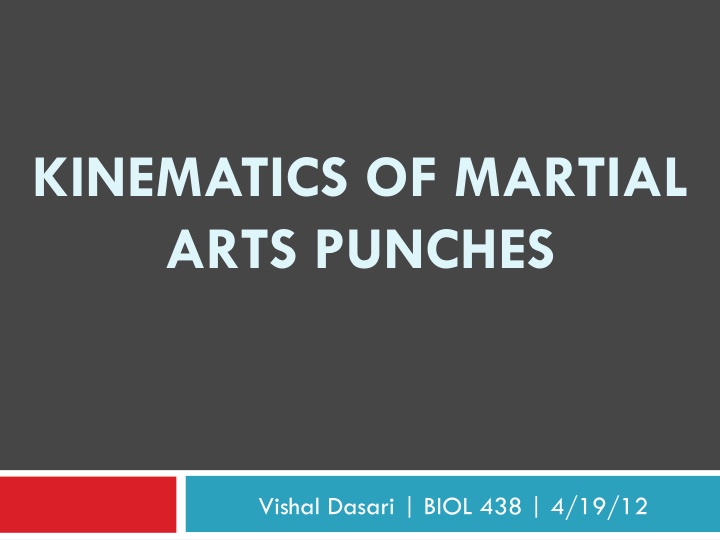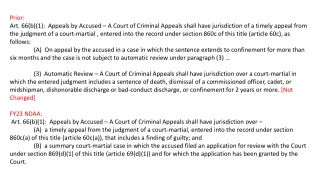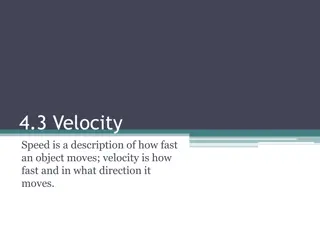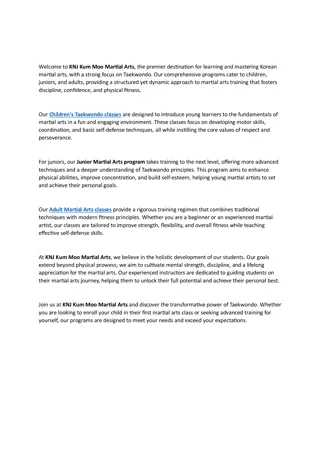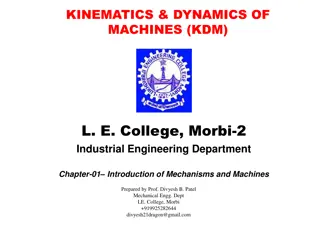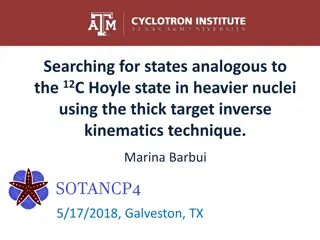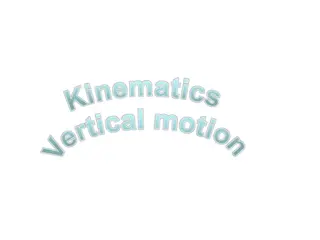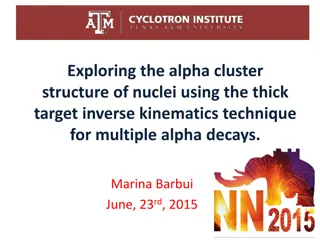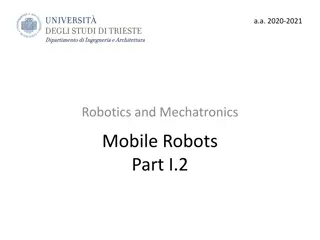Kinematics of Martial Arts Punches: Comparing Speed and Power
Investigating the kinematics of various martial arts punches such as Traditional Rotational Punch, Late Rotation Punch, Isshinryu Style Vertical Punch, and more. Explore the differences in speed and power of these techniques, analyzing factors like fist velocity, muscle extension impact, and kinetic energy change. Understand the complexities behind each punch style and their effectiveness in combat scenarios.
Download Presentation

Please find below an Image/Link to download the presentation.
The content on the website is provided AS IS for your information and personal use only. It may not be sold, licensed, or shared on other websites without obtaining consent from the author.If you encounter any issues during the download, it is possible that the publisher has removed the file from their server.
You are allowed to download the files provided on this website for personal or commercial use, subject to the condition that they are used lawfully. All files are the property of their respective owners.
The content on the website is provided AS IS for your information and personal use only. It may not be sold, licensed, or shared on other websites without obtaining consent from the author.
E N D
Presentation Transcript
KINEMATICS OF MARTIAL ARTS PUNCHES Vishal Dasari | BIOL 438 | 4/19/12
Karate History Karate: Empty Hand Originated in Okinawa, Japan Shitoryu (1928) Gojuryu (1930) Rotational Punch Shotokan (1938) Wadoryu (1939) Isshinryu (1956) - Vertical Punch Vertical Punch thought to be faster, but less powerful.
Introduction Four kinds of punches studied Traditional Rotational Punch Late Rotation Punch Isshinryu Style Vertical Punch Recoil to keep elbows in for guard and follow-up Vertical Punch without Style s recoil Which is faster? Which is more powerful? Why?
Traditional Rotational Punch (Fist) Fist Maximum Velocity reached BEFORE impact. As muscles extend, fist impact at lower velocity.
Traditional Rotational Punch (Ball) Ball reaches Maximum Velocity as it leaves Fist Contact Time period of Ball deformation when Fist is in contact with ball as arm extends fully Velocity of fist dropping as arm extends
Traditional Rotational Punch (Calc) Fist Maximum Horizontal Velocity: 8.611m/s 19.26 miles per hour Ball Maximum Horizontal Velocity: 10.052m/s 22.49mph | F=ma | (10.052/0.028)(0.45)=161.55N Ball Horizontal Kinetic Energy Change: 0J {(0.5)*(10.052m/s)^2*(0.45kg)}J = 22.735J Time Span: just before impact immediately following loss of contact: 0.3640sec 0.3920sec = 0.028sec Concluded Power of Punch = 22.735/0.028 = 811.96W Assumed that Vertical Velocity/Kinetic Energy are inapplicable to question of Power.
Late Rotation Punch (Fist) Fist Maximum Velocity reached BEFORE impact. As muscles extend, fist impact at lower velocity.
Late Rotation Punch (Ball) Ball reaches Maximum Velocity as it leaves Fist Contact Time period of Ball deformation when Fist is in contact with ball as arm extends fully Velocity of fist dropping as arm extends
Late Rotation Punch (Calc) Fist Maximum Horizontal Velocity: 8.706m/s 19.48 miles per hour Ball Maximum Horizontal Velocity: 10.960m/s 24.52mph | F=ma | (10.960/0.028)(0.45)=176.14N Ball Horizontal Kinetic Energy Change: 0J {(0.5)*(10.960m/s)^2*(0.45kg)}J = 27.027J Time Span: just before impact immediately following loss of contact: 1.464sec 1.4920sec = 0.028sec Concluded Power of Punch = 27.027/0.028 = 965.25W Assumed that Vertical Velocity/Kinetic Energy are inapplicable to question of Power.
Isshinryu Vertical Punch (Fist) Fist Maximum Velocity reached AT impact. Vertical Punch has longer reach due to bent wrist, forward lean. Strike is at top of ball, Force lost through topspin. Could contribute to inaccurate calculation of ball horizontal velocity/KE and therefore Punch Power.
Isshinryu Vertical Punch (Ball) Ball reaches Maximum Velocity as it leaves Fist Contact Time period of Ball deformation when Fist is in contact with ball as arm extends fully Velocity of fist dropping as arm extends
Isshinryu Vertical Punch (Calc) Fist Maximum Horizontal Velocity: 7.497m/s 16.77 miles per hour Ball Maximum Horizontal Velocity: 9.567m/s 21.40mph | F=ma | (9.567/0.02)(0.45)=215.26N Ball Horizontal Kinetic Energy Change: 0J {(0.5)*(9.567m/s)^2*(0.45kg)}J = 20.594J Time Span: just before impact immediately following loss of contact: 0.632sec 0.652sec = 0.020sec Concluded Power of Punch = 20.594/0.020 = 1029.7W Assumed that Vertical Velocity/Kinetic Energy are inapplicable to question of Power.
Vertical No Recoil Punch (Fist) Fist Maximum Velocity reached JUST before impact. Vertical Punch has longer reach due to bent wrist, forward lean. I was standing slightly further back than usual, so impact came at lower velocity. Strike is at top of ball, Force lost through topspin. Could contribute to inaccurate calculation of ball horizontal velocity/KE and therefore Punch Power.
Vertical No Recoil Punch (Ball) Ball reaches Maximum Velocity as it leaves Fist Contact Time period of Ball deformation when Fist is in contact with ball as arm extends fully Velocity of fist dropping as arm extends
Vertical No Recoil Punch (Calc) Fist Maximum Horizontal Velocity: 7.950m/s 17.78 miles per hour Ball Maximum Horizontal Velocity: 10.676m/s 23.88mph | F=ma | (10.676/0.02)(0.45)=240.21N Ball Horizontal Kinetic Energy Change: 0J {(0.5)*(10.676m/s)^2*(0.45kg)}J = 25.645J Time Span: just before impact immediately following loss of contact: 0.536sec 0.556sec = 0.020sec Concluded Power of Punch = 25.645/0.020 = 1282.25W Assumed that Vertical Velocity/Kinetic Energy are inapplicable to question of Power.
Results from HSCam Study Horizontal Punch is faster. Conclusion of speed is under assumption that distance moved by both punches is equal, which is false. Rotational Punch has a greater distance to move, but movement incorporates more hip rotation. Therefore, maximum horizontal velocity might be greater, but time taken to go from hip to Point of Impact (POI) may be closer to that of the Vertical Punch. Vertical Punch has shorter distance to move. Inability to incorporate as much hip rotation into movement significantly affects maximum horizontal velocity, but time from hip to POI needs to be measured for both punches.
Results from HSCam Study Vertical Punch is more Powerful. The Vertical Punch spends less time in contact with the Ball, reducing the time over which the Ball s Horizontal KE is increased. This shows as an increased Power output upon impact. The Horizontal Punch spends more time in contact with the Ball, a longer time over which the Ball s Horizontal KE is increased. This shows as a lower Power output upon impact. Horizontal Punch s longer fist-contact may be attributed to fist-rotation, which causes Ball deformation in more than the x direction of movement, causing spin which again contributes to a longer fist-contact period.
Results from HSCam Study Vertical Punch is more Powerful. Force of Impact calculations are shown to be proportional to Power calculations, but this is due to lack of appropriate measurement methods. Instantaneous Force must be measured; Ball deformation makes it impossible to do this because Fist is still in contact with and imparting energy to the Ball after first impact. However, using derivative function, attempted to calculate instantaneous acceleration, to use in F=ma.
Traditional Rotational Punch (Force) F=ma | (0.45kg)*(597.34m/s/s)=268.803N
Late Rotation Punch (Force) F=ma | (0.45kg)*(688.39m/s/s)=309.78N
Isshinryu Vertical Punch (Force) F=ma | (0.45kg)*(494.26m/s/s)=222.42N
Vertical No Recoil Punch (Force) F=ma | (0.45kg)*(622.64m/s/s)=280.19N
Results from HSCam Study Late Rotation Punch impact with most force. Improved calculations for instantaneous acceleration of the ball immediately following fist-impact allow calculation of instantaneous force, the ideally theoretical force that would be dealt to a target with that punch (not ideal in real life, but carrying on). These calculations show that the Late Rotation punch is the most powerful*, most likely due to the addition of force towards the end of the punch due to the last minute fast rotation at the wrist. Next is the No Recoil Vertical Punch, the Traditional Rotational Punch, and finally the Isshinryu Punch. Makes sense as Isshinryu punch requires recoil, preparation for which demands preemptive slowing down of the punch slightly before impact, resulting in lower force.
HSCam Conclusions Late Rotation Punch hits with greater Force. Vertical No Recoil Punch is most Powerful. Late Rotation Punch is Fastest. Not possible with current set up to measure time taken to move from hip to POI, which should be considered the real measure of punching speed , not maximum horizontal velocity of the fist. Temptation to hypothesize that Isshinryu Punch would be fastest in above regard, because recoil preemptively relaxes the arm in preparation for the next strike. Should HSCam study punches for repeating strikes also. TRP: 0.224sec; LRP: 0.216sec; IsVP: 0.207ec; NRVP: 0.204sec -- hip to POI times (!)
Thank you! And if we have time Questions? Thank you! MoCap analysis of the punches, and how force plate vector changes show Weight Shifting during punches. MoCap offers a more clear, multidimensional view of the punching movement. Can be slowed to 1/10th speed to study movement in detail.
Motion Capture Analysis Show MoCap Animations. Compare to Excel sheets and show force plate vector changes indicating weight shifting during movement. Highlight forward weight shift during Vertical Punches.
